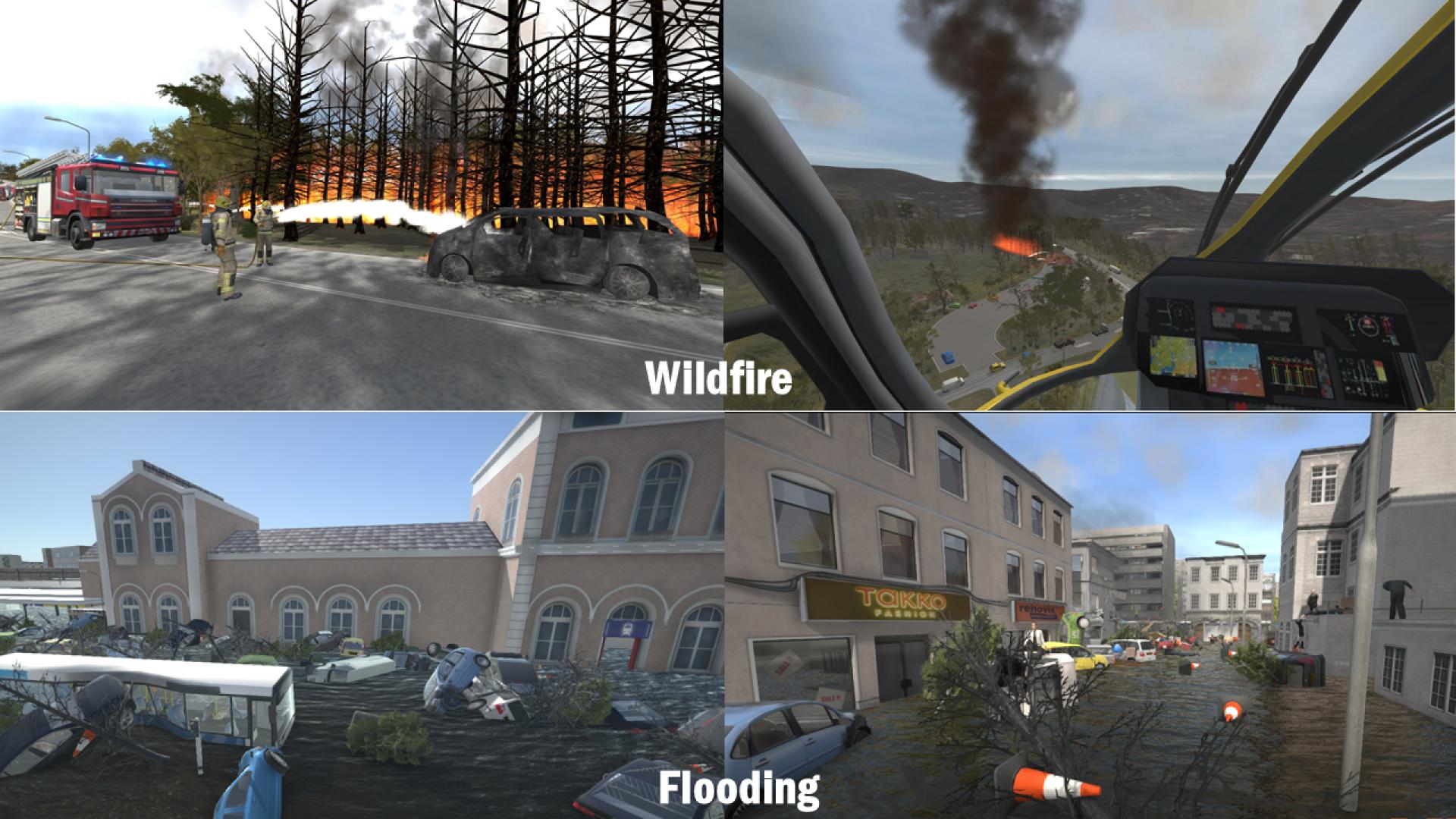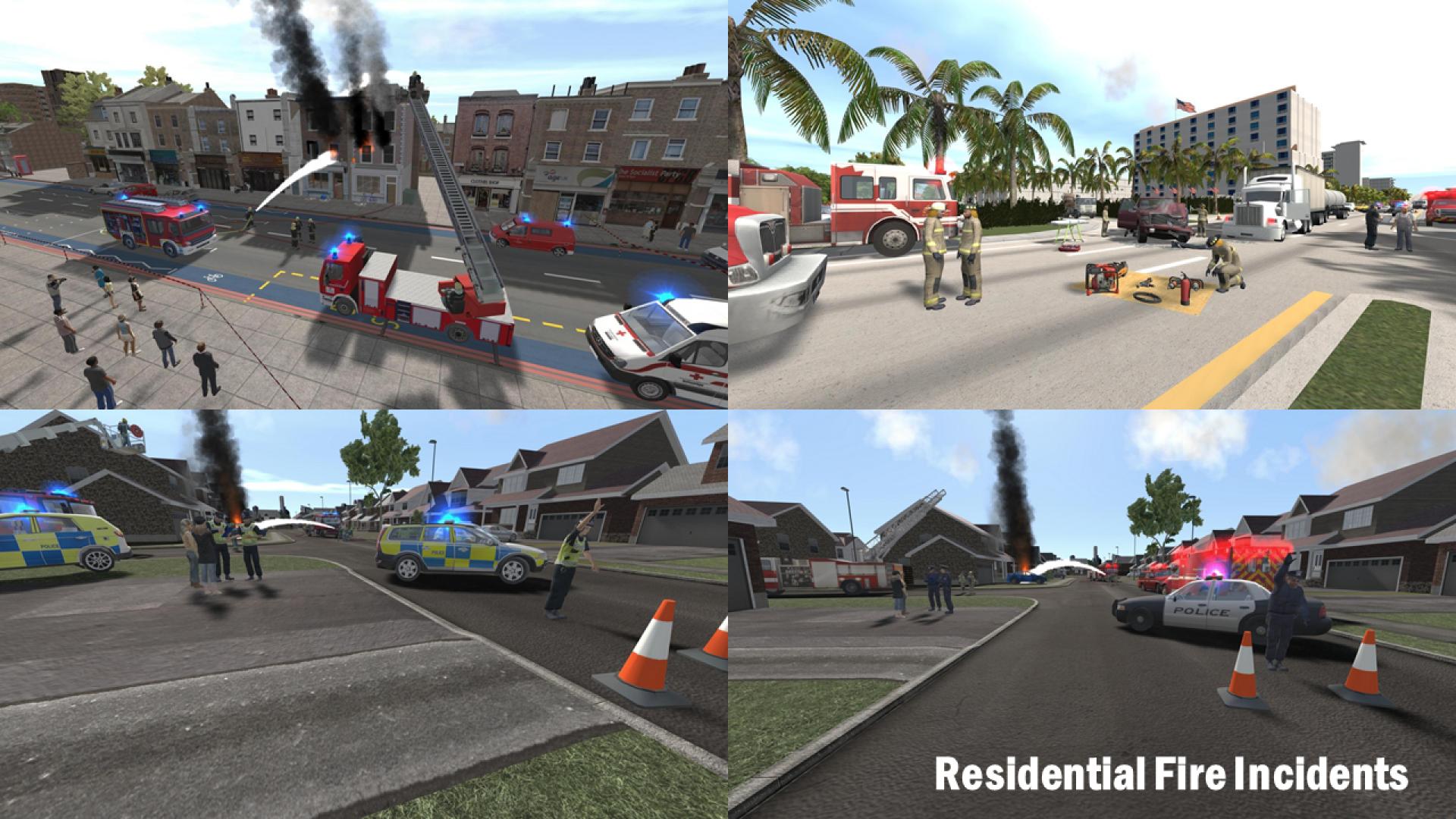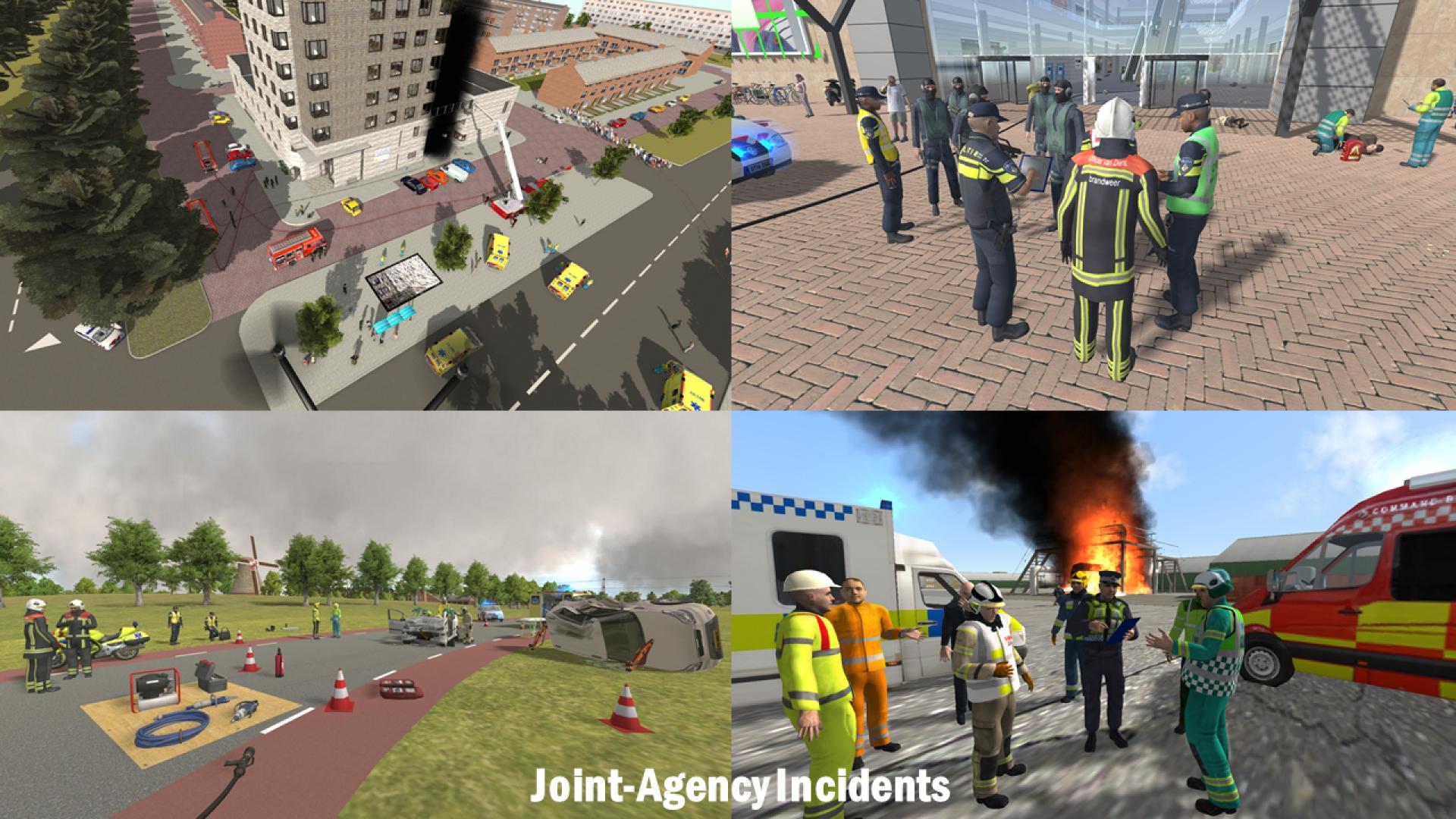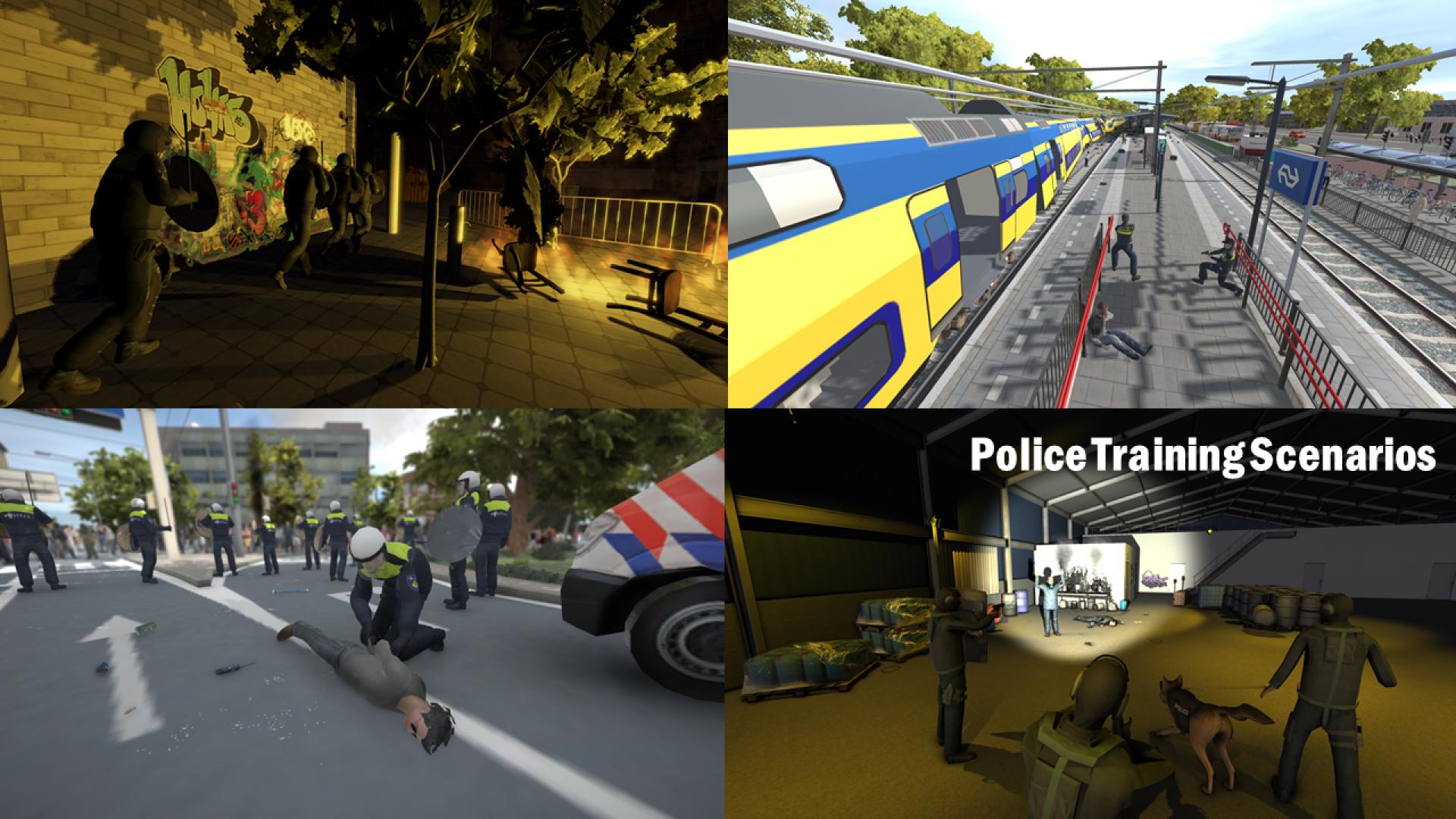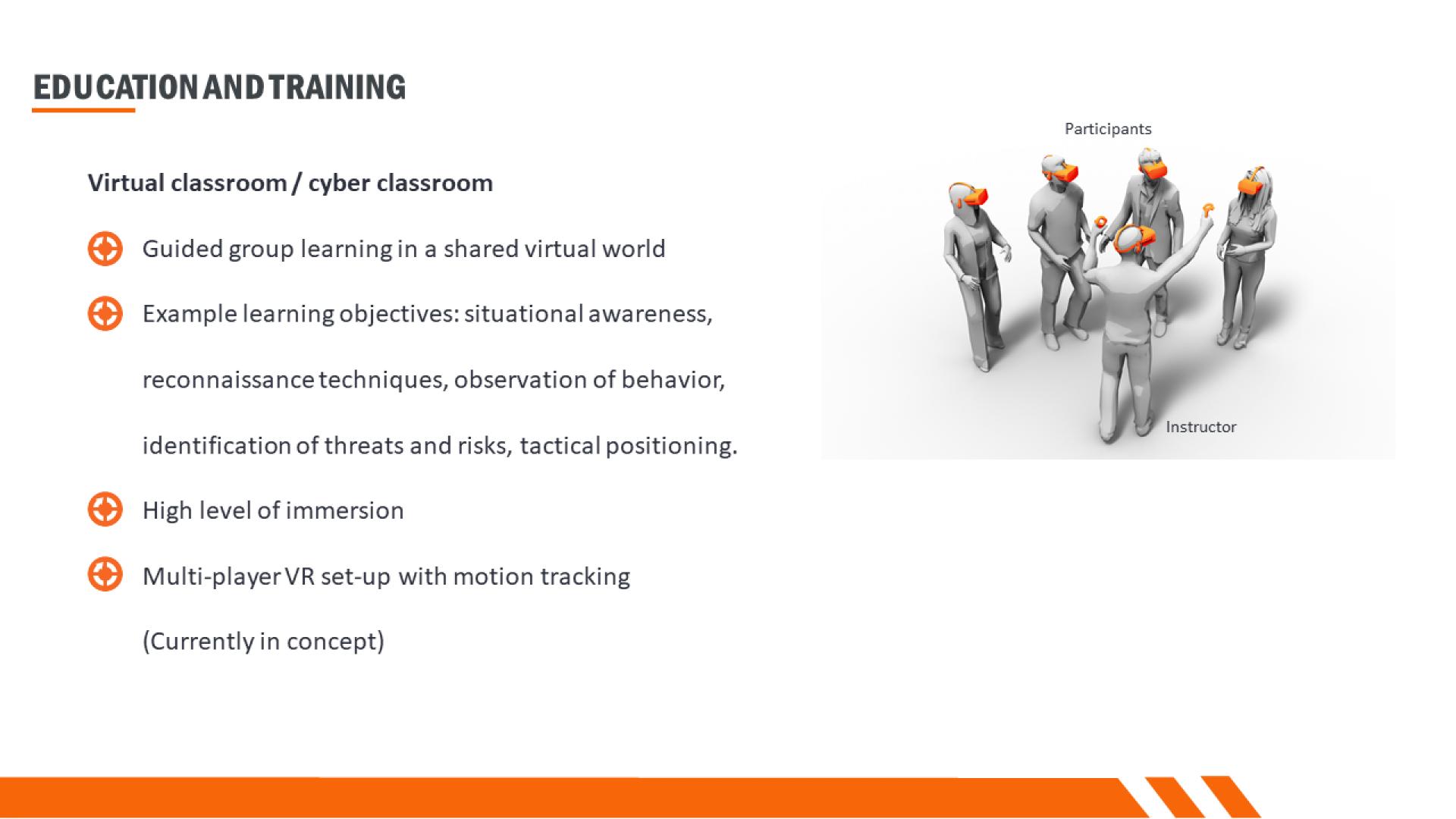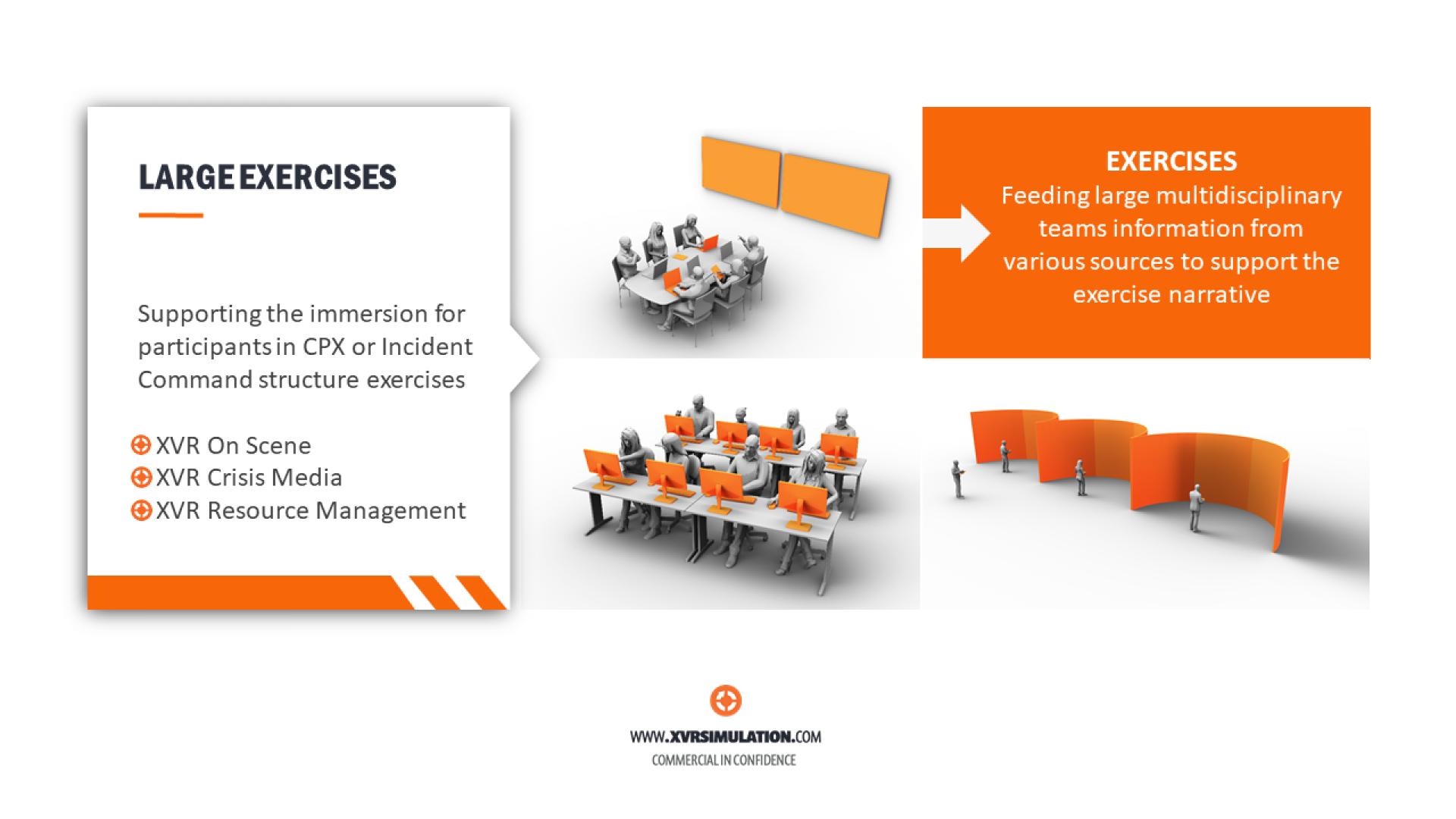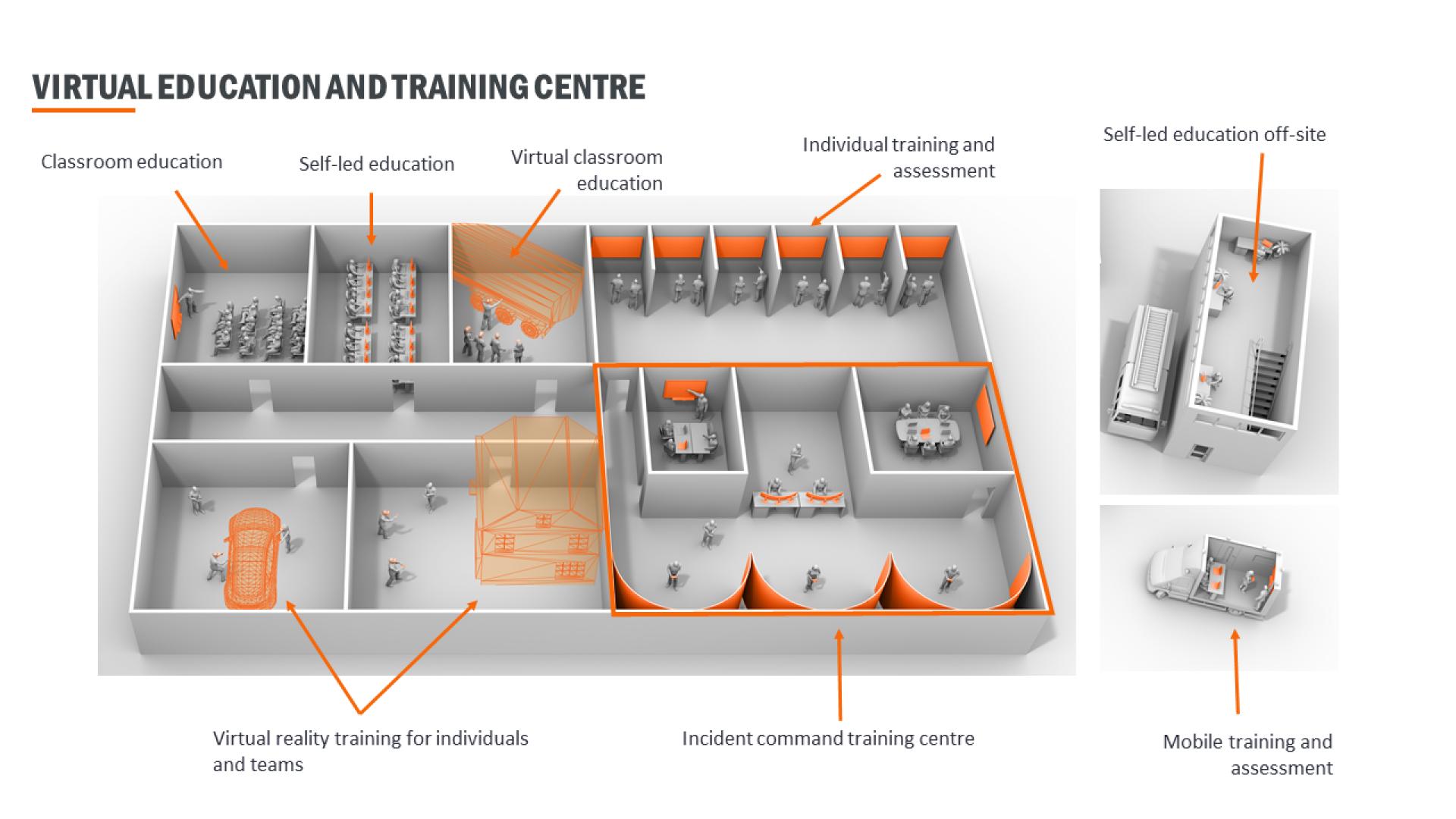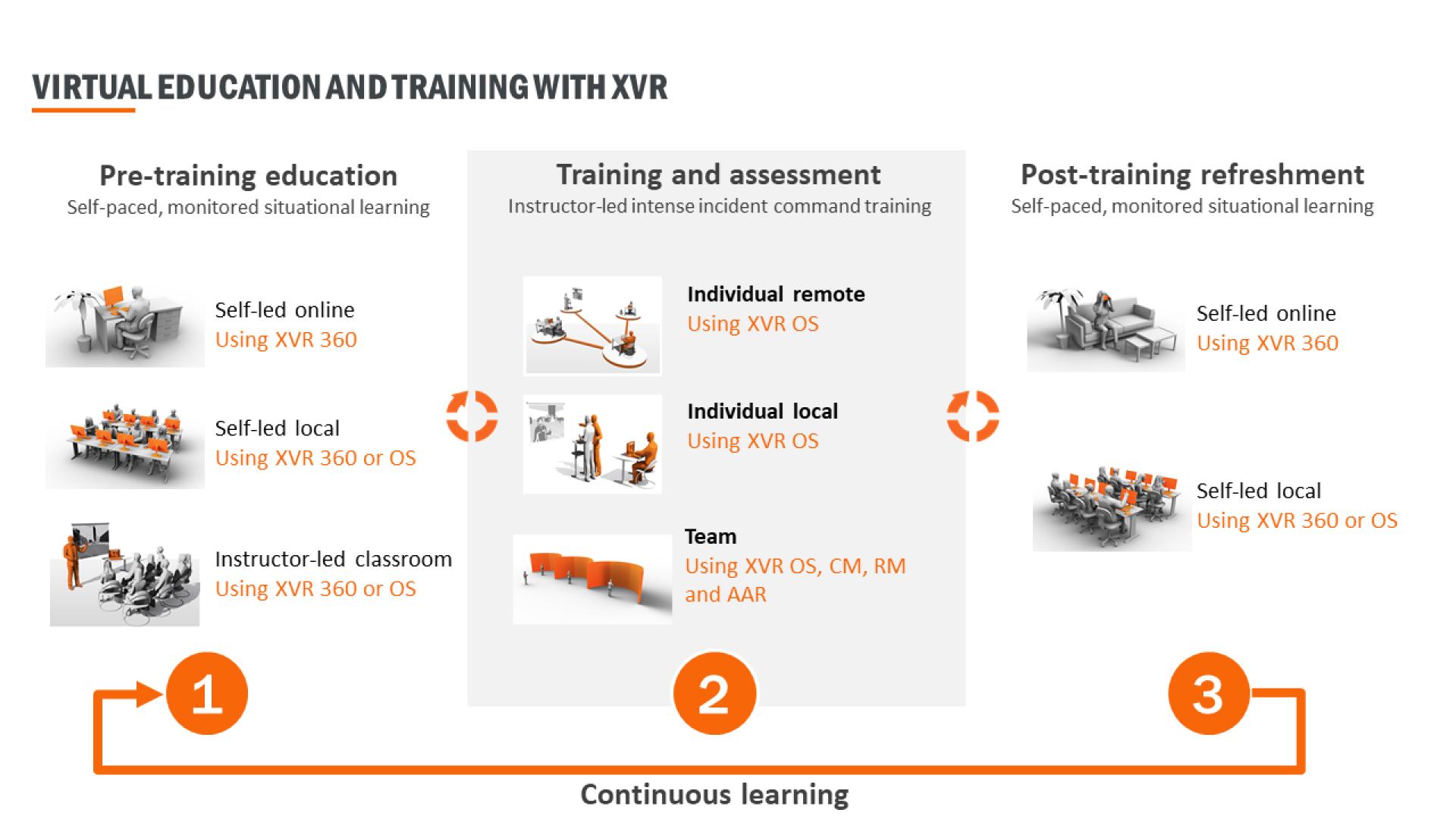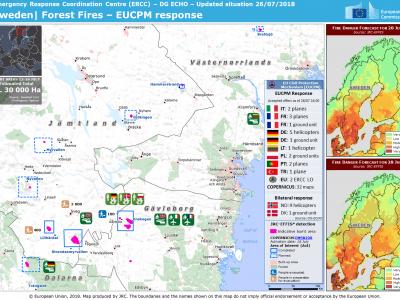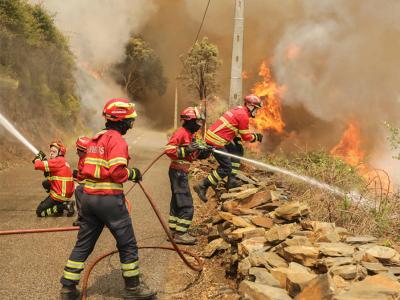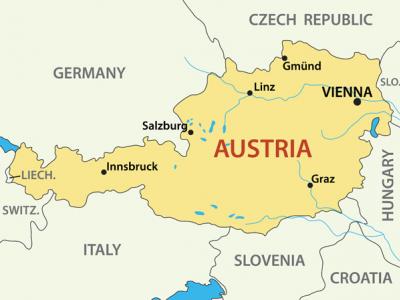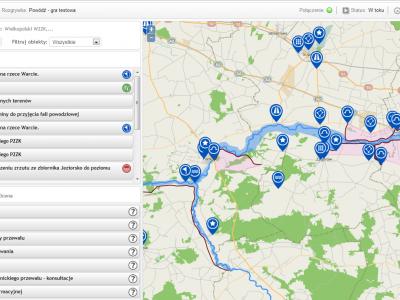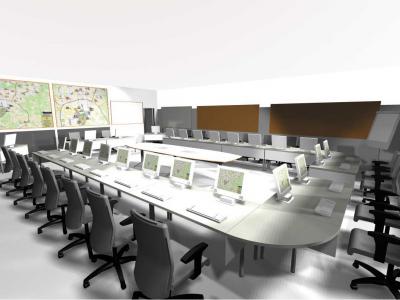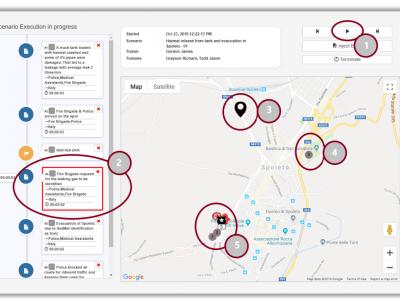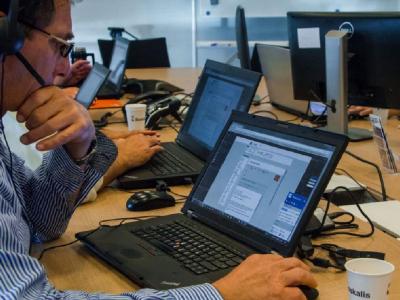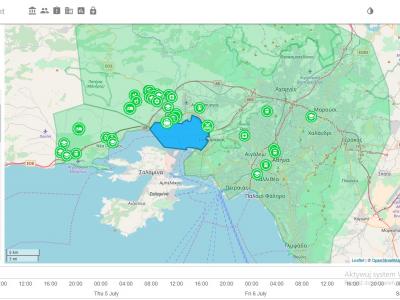Contact
Provider(s):
The XVR On Scene module is perfect to train operational and tactical level (bronze and silver) responders. XVR On Scene provides the trainee with an interactive and immersive 3D view of the incident . The is completely adaptable to your local situation. Instructors and scenario builders can choose from a large variety of environments (such as city centres, industrial areas, rural terrains, critical infrastructure and so on) and place a vast amount of objects in there from the >4000 objects XVR library. In this way, you can build any type of incident and the different ways in how this incident could evolve based on the actions and decisions by the participants.
XVR On Scene is a powerful to help trainees understand procedures by experience, lets them acquire practical knowledge in a relatively short time frame, practice decision-making skills, and have them experience situations that rarely occur in real life while in a safe environment. Over and over.
XVR On Scene is used in classroom settings,in individual or assessments and in team-exercises. It can be projected on large monitors and on VR head-mounted-displays.
The classroom set-up is used for triggering a group discussion about a virtual scenario. Discussions can focus on incident approach, carrying out the first reconnaissance or making the first deployment decisions.
With the individual set-up, the participant is immersed in a virtual scenario while the instructor can adjust the scenario based on the participant's decisions. This set-up is excellent for individual or assessment of a certain skill set.
The team set-up allows you to train multiple participants in mono- or multidisciplinary exercises. One or more instructors can be in charge of the learning objectives and role-playing. Team training exercises are well suited to train communication and reporting skills.
Supported Use Cases
XVR On Scene in Education and Training

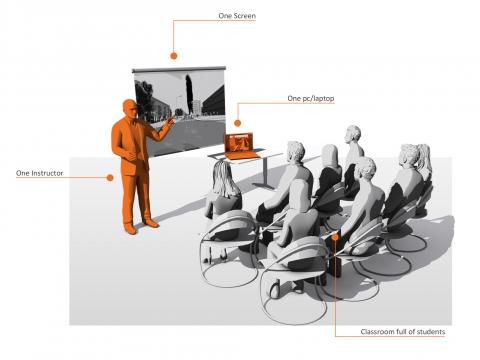
XVR On Scene in individual training

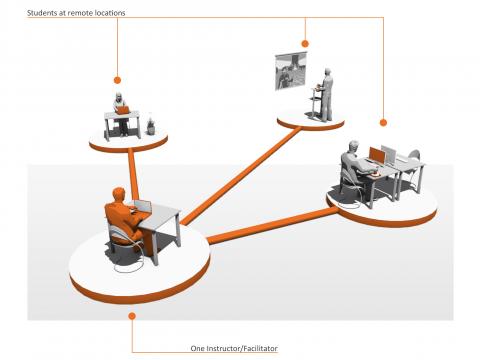

XVR On Scene in individual Assessments
XVR On Scene in team training

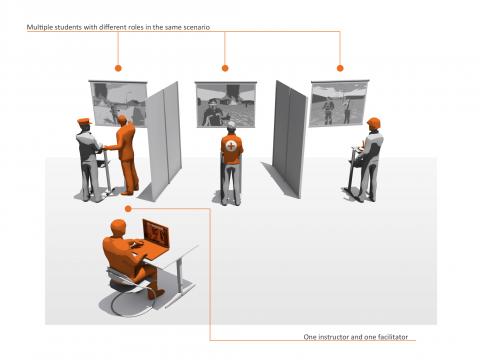

XVR On Scene in large-scale exercises

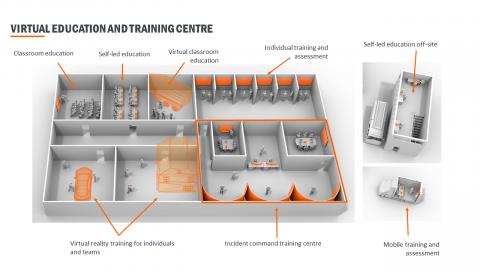
 |
Portfolio of Solutions web site has been initially developed in the scope of DRIVER+ project. Today, the service is managed by AIT Austrian Institute of Technology GmbH., for the benefit of the European Management. PoS is endorsed and supported by the Disaster Competence Network Austria (DCNA) as well as by the STAMINA and TeamAware H2020 projects. |
